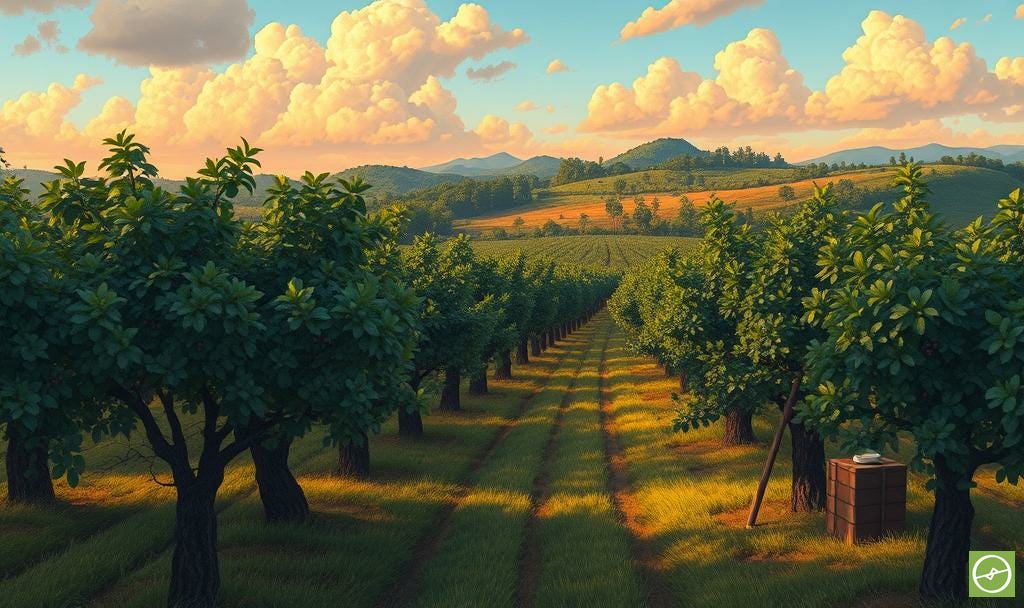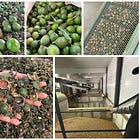Defending Your Fruit: Lessons from Uganda’s Hass Avocado Struggle
How Uganda’s Hass Avocado Export Struggles Mirror the Risks in Macadamia Farming – And What Farmers Must Do to Protect Their Brand and Market
Over the past few months here on AgTech Diaries, we’ve explored (or at least touched on) themes like market timing, branding, supply chain logistics, and how policy can make or break agricultural industries.
Whether we’ve been looking at top-tier table grapes, citrus, macadamias, or other high‑value crops, the underlying message has been the same: farming doesn’t stop at the farm gate.
Today’s case study focuses on Hass avocados in Uganda and Kenya - but the lessons cut across every premium export crop. If you farm any high‑value perennial, you’ll see familiar challenges. And perhaps more importantly, you’ll notice lesson on how to avoid the same pitfalls.
Uganda’s Missed Opportunities
Uganda could be a heavyweight in the global Hass avocado trade. The climate is right. The trees are productive. The demand is there. But instead of building a strong export brand, Uganda’s fruit is being funnelled into someone else’s success story.
“What Hass represents is economic security - and we should be protecting it like we do with gold, and soon, oil.” - Hani Dahlan
Kenyan traders cross the border, buy Ugandan Hass, and export it under the Kenyan label. This practice, known as "re-exporting," allows traders to bypass Ugandan regulations and potentially benefit from Kenya's stronger market position.
Kenya gets the brand recognition, the GDP bump, and the credibility in key markets. Uganda is left invisible on the export scoreboard.
Did you know about Uganda’s avocado production till right now?
The Real Cost of Inaction
A few farmers may benefit in the short term by selling to Kenyan buyers. But nationally, this is a loss of future economic security. Hass isn’t just another fruit; it’s a strategic export crop. Locals feel it should be treated like gold, not as a neighbourhood side hustle.
Other nations get this. Morocco planted Hass a year after Uganda, and has already shipped 100,000 tonnes to Europe this year.
Why Trade Agreements Won’t Save You
Uganda’s current situation is a case study in how trade agreements can be skewed. Kenya actively blocks its own Hass exports during certain months to protect fruit quality and branding. When they need to fill orders, they buy from Uganda. The agreements allow it. The market rewards it. And sadly Uganda’s brand loses every time.
The Fix Is Simple
From October to mid-March (Uganda’s prime export window) no Hass should leave the country unless it’s headed to a true export market. Kenya can buy what’s left after March. This is strategic, enforceable, and critical to protecting Uganda’s market position.
But it’s not only about blocking the outflow. Uganda must also:
Build its own brand in global markets.
Educate farmers on quality standards and market timing.
Price for global realities, not local perceptions.
Align national policy with long-term export growth.
What Macadamia Farmers Can Learn from This
If you’re a macadamia farmer, this story might sound uncomfortably familiar. While the crops are different, the lessons are the same - and they’re worth paying attention to.
Branding Might Matter More Than Volume
Just like Hass avocados, macadamias are a premium export product. The highest returns come when your product is known, trusted, and positioned in the right market segment. If your nuts end up mixed into bulk commodity streams, you lose control over pricing and perception.
Protect Your Prime Marketing Window
Macadamia prices fluctuate across the year based on global supply flows. If you sell too early, too late, or into the wrong channels, you can miss premium pricing windows. Aligning your marketing strategy with those windows is just as important as growing a quality crop.
Quality is Non-Negotiable
Ugandan farmers selling sub-grade Hass to export buyers risk damaging their entire brand. The same is true for macadamias. Kernel recovery, defect levels, moisture content - these are the metrics that decide whether you’re commanding top dollar or sitting at the bottom of the heap.
Policy & Industry Coordination Count
Uganda’s biggest challenge isn’t agronomy, it’s governance and coordination. In the macadamia world, this plays out in how processors, marketers, and farmer groups align (or don’t) on standards, marketing campaigns, and supply discipline. Without it, farmers compete against themselves.
Well done to The World Macadamia Association on trying to bind stakeholders together in the right way. It’s a positive step in the right direction.
Know the Global Game You’re In
Peru doesn’t care about Uganda’s local avocado calendar. And I doubt China cares about your harvest schedule if Australian and Kenyan macadamias are hitting the market at the same time. The game is global. Timing, logistics, and market intelligence shape profitability just as much as orchard yields.
The Bottom Line
Whether you’re farming Hass avocados in Uganda or macadamias in South Africa, the principle is the same:
Protect your product.
Protect your market.
Protect your brand.
If you don’t, someone else will profit from your hard work - and you’ll be left asking why the scoreboard doesn’t reflect the efforts you’ve all put in.
Now is the time for farmers, exporters, and policymakers to think beyond the farm gate. Agriculture is no longer just about production… it’s also about positioning.
If this post has left you with some food for thought, I’d like to get your opinion - feel free to engage in the comments. And as always, thanks for reading.








![Australian Macadamia [Yield] Disaster?](https://substackcdn.com/image/fetch/$s_!LXWT!,w_140,h_140,c_fill,f_auto,q_auto:good,fl_progressive:steep,g_auto/https%3A%2F%2Fsubstack-post-media.s3.amazonaws.com%2Fpublic%2Fimages%2F342529aa-b571-4c02-a5cd-14bb6ff3f34b_1792x1024.png)

